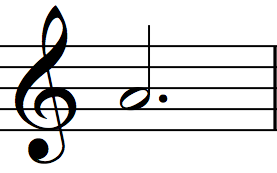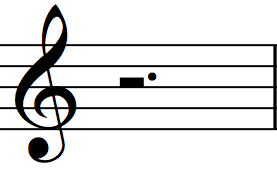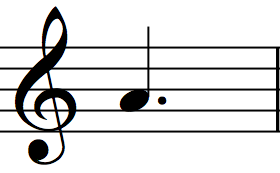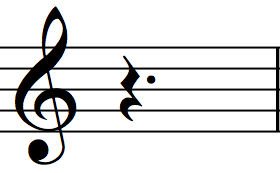5 Notes on the Third String & Dotted Rhythms
INTRODUCTION
In this unit you will learn two fretted notes on the third string and two types of dotted rhythms. You will also be introduced to the concept of syncopation.
NOTATIONS
Notes
The Note ‘A’
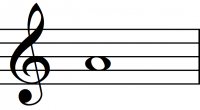
‘A’ is in the second space of the staff. To play ‘A’, fret the second fret on the third string.
The Note ‘B’
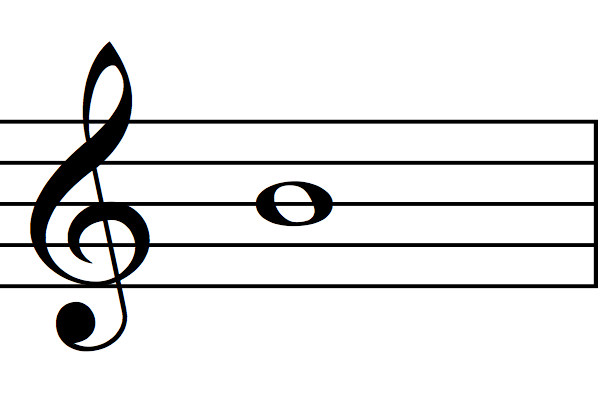
You already learned to read this note as the open second string. However, this same pitch can be played on the fourth fret of the third string as well. When you see this note in music notation you can choose whether you want to play it as the second string/open (AKA no fretting) or the third string/fourth fret.
Rhythms
The rhythmic concepts learned in this unit often create an energizing and exciting musical effect known as syncopation. To understand syncopation you must first understand the terms onbeat and offbeat. Remember how to count eighth notes in 4/4 time?
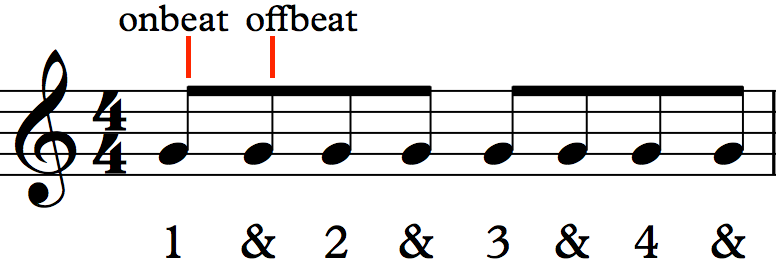
In this example, the onbeats occur on the numbers 1,2,3,4 and the offbeats occur on the &‘s. Onbeats usually get more strength and emphasis than offbeats. The listener expects to hear emphasis on the onbeat. Syncopation plays with those expectations. When syncopation occurs, musical emphasis is either partially, or completely, placed on the offbeats rather than the onbeats. Syncopation can occur for a few beats, or for the entire piece. The following dotted rhythms often facilitate syncopation.
Dotted Half Note
The dotted half note sustains for 3 beats. The dotted half note consists of a half note with a dot positioned close to the notehead.
Dotted Half Rest
The dotted half rest creates silence for 3 beats. The dotted half rest consist of a half note rest with a dot positioned to its right.
Dotted Quarter Note
The dotted quarter note sustains for 1.5 beats. The dotted quarter note consists of a quarter note with a dot positioned close to the notehead.
Dotted Quarter Rest
The dotted quarter rest creates silence for 1.5 beats. The dotted quarter rest consists of a quarter note rest with a dot positioned to its right.
The Pickup
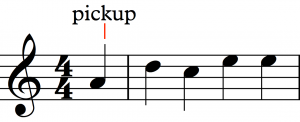
The pickup (AKA anacrusis) is a note, or small collection of notes, that precedes the first downbeat in a musical section or phrase. The downbeat is the first onbeat of each measure.
Let’s Play |
Sight-Reading Tip
Most people experience difficulty when learning to sight-read syncopated rhythms. Find scores that contain syncopated rhythms and pluck the rhythms only. In other words, ignore the changing pitches and choose only one pitch to play so that you can focus all your attention on sight-reading rhythms. You can apply this approach to the duets in this series.
However, for a more comprehensive resource, I recommend using the book, Modern Reading Text in 4/4 for All Instruments by Louis Bellson and Gil Breines. Make sight-reading rhythms a part of your daily practice. It will increase your confidence and effectiveness in a matter of days!
Checklist for Sight-Reading
- Count the beats out loud (including the &).
- Keep going (even if you make a mistake).
- Maintain your best playing posture.
- Look at the score, not your hands.
- Play with the feel of the meter.
- Play patterns instead of individual notes (AKA chunk).
- Cultivate a calm demeanor.
- Have fun!
Let’s Play Rhythms |
Attitude Tip
Problems worthy of attack prove their worth by fighting back. –Piet Hein
Exercise 5.1: Score
Exercise 5.1: Audio
Exercise 5.2: Score
Exercise 5.2: Audio
Exercise 5.3: Score
Exercise 5.3: Audio
Let’s Play Patterns |
Attitude Tip
There are two kinds of worries–those you can do something about and those you can’t. Don’t spend any time on the latter. –Duke Ellington
Exercise 5.4: Score
Exercise 5.4: Audio
Exercise 5.5: Score
Exercise 5.5: Audio
Exercise 5.6: Score
Exercise 5.6: Audio
Let’s Play Duets |
Attitude Tip
It is our choices that show what we truly are, far more than our abilities. –Albus Dumbledore (J.K. Rowling)
Exercise 5.7, Romanseca: Score
Exercise 5.7, Romanesca: Audio
Minuet in C Major by Johann Christoph Friedman Bach: Score
Minuet in C Major: Audio
Menuet en Rondeau by Jean-Philippe Rameau: Score
Menuet en Rondeau: Audio
Congratulations!
You have completed this unit! If you kept up with the beat and accurately played approximately 70% of the pitches and rhythms, you are ready for the next unit. Feel free to repeat the exercises. However, do not play them so often that you memorize them. Once you memorize the notation, you are no longer developing the skill of sight-reading.

